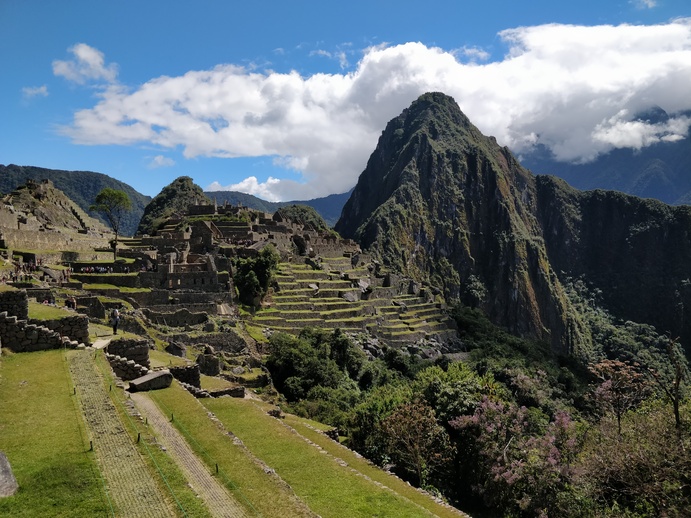Simple tool that overlays a transparent foreground image onto a background image.
The first two arguments are the background and foreground images respectively. Optional arguments three and four are the x and y position that determine where to overlay the foreground image relative to the background.
For example:
| Background | Foreground | Result |
|---|---|---|
 |  |  |
Written by PieterP, 2020-07-07
#include <algorithm> // std::min, max
#include <cassert> // assert
#include <chrono> // std::chrono::high_resolution_clock
#include <iomanip> // std::setprecision
#include <iostream> // std::cout
#include <string> // std::string, std::stoi
#include <opencv2/imgcodecs.hpp> // cv::imread, cv::imwrite
#include <opencv2/imgproc.hpp> // cv::cvtColor
#include <alpha-lib/overlay_alpha.hpp> // overlay_alpha_stride
using std::cout;
using std::endl;
// Print the usage and command line options.
// Print how long it took to overlay the image.
template <class T>
// Parse the command line arguments
if (argc <= 2) {
print_usage(argv[0]);
return argc == 1 ? EXIT_SUCCESS : EXIT_FAILURE;
}
std::string bg_fname = argv[1];
std::string fg_fname = argv[2];
int x = argc > 3 ? std::stoi(argv[3]) : 0;
int y = argc > 4 ? std::stoi(argv[4]) : 0;
int repeat = argc > 5 ? std::stoi(argv[5]) : 1;
// Load the images
cv::Mat bg_img = imread(bg_fname, cv::IMREAD_UNCHANGED);
cv::Mat fg_img = imread(fg_fname, cv::IMREAD_UNCHANGED);
if (bg_img.empty())
throw std::runtime_error("unable to load " + bg_fname);
if (fg_img.empty())
throw std::runtime_error("unable to load " + fg_fname);
// Check that the images are in the right format
if (bg_img.channels() == 3)
if (bg_img.channels() != 4)
throw std::runtime_error("incorrect background image color format");
if (fg_img.channels() != 4)
throw std::runtime_error("foreground image without alpha channel");
// Check that the x and y coordinates are inside of the background image
if (x >= bg_img.cols)
throw std::runtime_error("x coordinate out of bounds");
if (y >= bg_img.rows)
throw std::runtime_error("y coordinate out of bounds");
// Compute what parts of the background and foreground image to use
int fg_x = std::max(0, -x);
int fg_y = std::max(0, -y);
int bg_x = std::max(0, x);
int bg_y = std::max(0, y);
// Overlay the foreground image over the background image
auto start = std::chrono::high_resolution_clock::now();
for (int r = 0; r < repeat; ++r) {
fg_img.at<uint8_t[4]>(fg_y, fg_x), // foreground
bg_img.at<uint8_t[4]>(bg_y, bg_x), // output
bg_img.cols, // background stride
fg_height, fg_width, // foreground dimensions
fg_img.cols); // foreground stride
}
auto finish = std::chrono::high_resolution_clock::now();
// Print how long it took
long fg_pixels = 1L * fg_width * fg_height;
print_duration(finish - start, repeat, fg_pixels);
// Write the result to a file
cv::imwrite("output.png", bg_img);
}
cout << "Usage: " << cmd << " <background> <overlay> <x> <y>" << endl;
}
using float_seconds = std::chrono::duration<float>;
using namespace std::chrono_literals;
std::cout << std::fixed << std::setprecision(3);
if (duration < 1000ns) {
return std::cout << duration.count() * 1e9 << " ns";
} else if (duration < 1000us) {
return std::cout << duration.count() * 1e6 << " µs";
} else if (duration < 1000ms) {
return std::cout << duration.count() * 1e3 << " ms";
} else {
return std::cout << duration.count() * 1e0 << " s";
}
}
template <class T>
auto duration_s = std::chrono::duration_cast<float_seconds>(duration);
cout << duration_s << " = " << duration_s / double(repeat)
<< "/it = " << duration_s / double(num_pixels * repeat) << "/px"
<< endl;
}